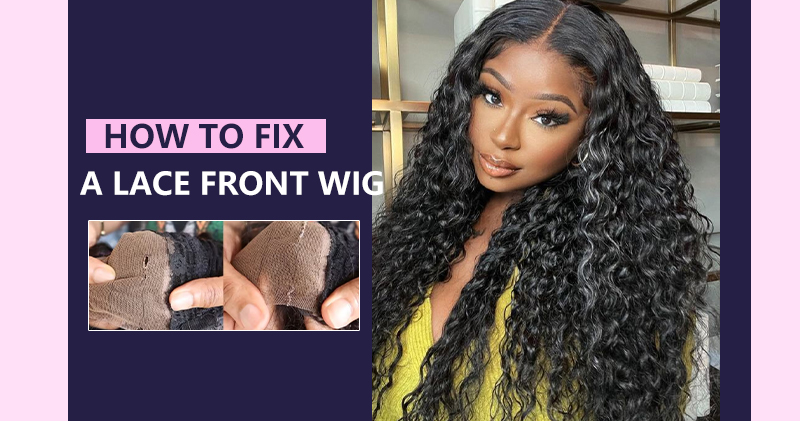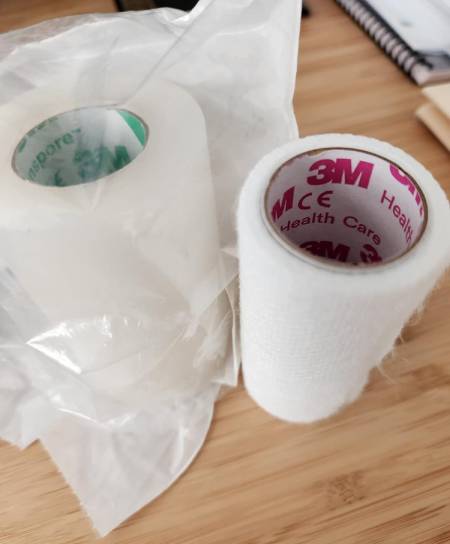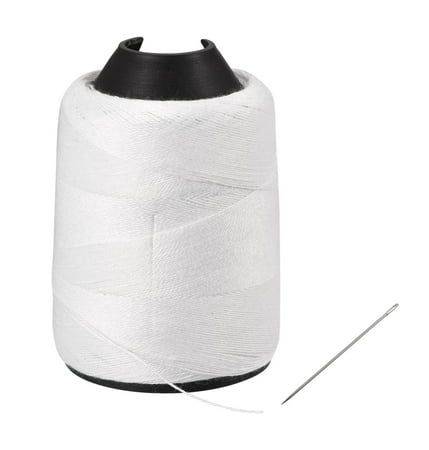How To Fix A Lace Front Wig?
Last updated Jun.15,2024
The allure of a lace front wig lies in its ability to provide a natural hairline. Hair strands on the frontal lace section are individually hand-tied into the lace holes, creating an illusion that the hair is growing directly from the scalp. However, lace is prone to damage, and when it is damaged, it appears unnatural.
So, today's article mainly teaches you how to fix a lace wig. You don't need to purchase a new lace wig or spend money to have it repaired by someone else; you can do it at home on your own. 
What Makes The Lace On a Lace Wig Tear?
Poor Quality
Do you have knowledge about the brand from which you purchased the wig? How are their hair products in terms of quality and design? Sometimes, the tearing of the lace on a lace wig might indeed be due to the wig manufacturer choosing low-quality lace materials or unprofessional production and design, which may not be related to our handling or actions.
Improper Handling
When wearing or removing a lace wig, pulling or exerting excessive force on the frontal lace area is incorrect and can lead to lace tearing. The proper approach is to handle it gently without applying too much force, preferably avoiding pulling the lace part altogether.
Excessive Friction
The lace part used in constructing lace wigs is quite delicate and fragile, especially for an HD lace wig. It's inevitable; prolonged wear will cause wear and tear on the lace. This is a natural occurrence as wigs also have a lifespan.
Improper Storage
Improper storage of wigs can lead to damage to the lace. For instance, storing the wig on a rough surface, squeezing it into a small space, placing heavy objects on the wig, or prolonged exposure to direct sunlight can cause harm to the lace.
How To Fix a Lace Front Wig?
What You May Need:
Your ripped lace wig
A wig head(optional)
Several T-pins
Scissor
knot sealer(optional)
Acetone
Wig brush
a. Start by thoroughly combing the wig to remove any knots and tangles. If there are severe knots, lightly spray some water on the hair to aid in detangling. Be cautious not to forcefully pull or tug at the strands when combing, as this could worsen any lace tearing. Gently comb from the ends to the roots of the hair.
b. Turn your ripped lace front wig inside out. Ensure the inner side of the lace wig is facing outward, with the lace portion directly in front of you, to facilitate the repair process. Whether you're working on a table or a wig stand, ensure you can clearly touch and see the torn lace section you need to fix.
c. Using acetone to clean the area that has been ripped on a lace wig. Acetone is a strong solvent that effectively removes residues, adhesives, or oils that might hinder the adhesion of the repair materials, such as adhesives or tapes. This ensure a clean surface before repairing it.
d. Make sure the ripped lace edges are in full touching. If working on a wig head, adjust the torn edges to meet and secure them using T-pins. If on a flat surface, you can use knot sealer to bring the edges together.
Tape Method:
Wig Tape
3M Transpore Tape

e. Use wig tape to cover the torn area. Cut a piece of tape slightly larger than the torn area, ensuring it adequately covers the damaged lace. Carefully place the tape over the torn lace, pressing firmly to ensure good adhesion. Finally, don’t forget to use scissors to trim any excess tape around the edges of the repaired area.
f. Cover the wig tape with 3M Transpore tape. Cut a piece of 3M Transpore tape the same size as the previously cut tape. Place this piece of 3M Transpore tape over the tape to prevent it from sticking to the hair and scalp.
Needle And Thread Method:
Small Needle
Transparent Thread

e. Prepare a needle threaded with thread. Choose a thread color similar to the lace or opt for a transparent one. Cut off a slightly longer thread, thread it through the needle's eye, and then you can tie both ends of the thread.
f. Begin by inserting the needle from the surface of the lace front, bringing it up to the underside.
g. Take a small stitch on the edge of the lace, then move the needle diagonally across the tear, picking up a small amount of lace on the other side.
h. Repeat this process, alternating sides, by taking small stitches on each edge of the tear and crossing the needle over to the other side diagonally.
i. Ensure the stitches are evenly spaced and pulled snugly to bring the torn edges together without puckering the lace.
j. Once you've sewn the entire tear, secure the end of the thread by making a small knot on the surface of the lace.
In Conclusion
Both of the above methods are commonly used to repair damaged lace on lace wigs. After repaired, the lace wig still looks natural, allowing you to maintain a natural hairline. These methods are not difficult. If you happen to have a lace wig with a torn lace, don't rush to buy a new wig or spend money on having someone else repair it. Follow the steps mentioned above and try repairing it yourself.
You might want to check these posts:
How To Install A HD Lace Wig?
How To Melt Lace On Lace Wigs?



 ×
×
